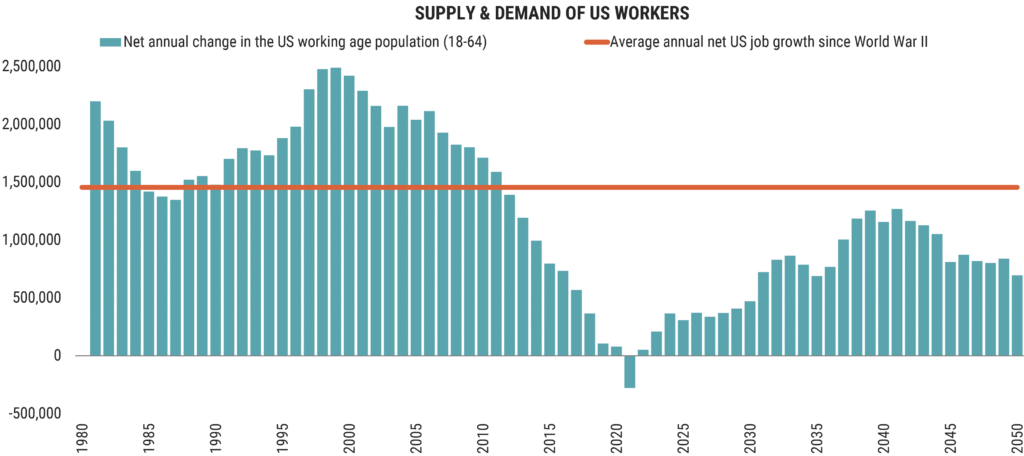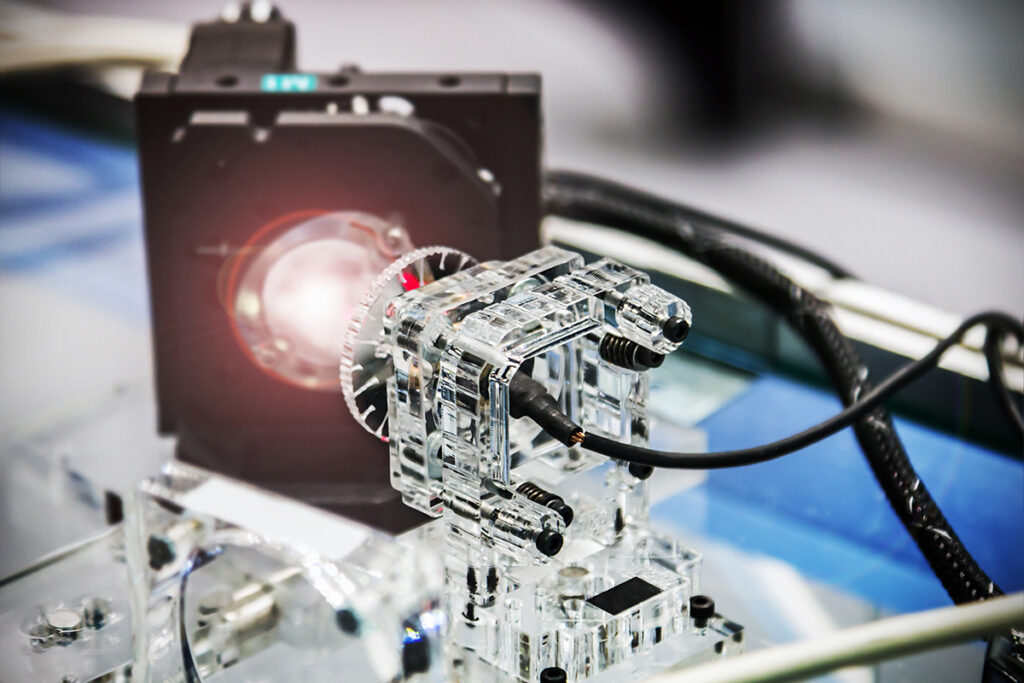The introduction of radical new technologies, from steam engines, to computers, to the internet, has typically felt like a seminal moment—one beyond which human strength or intellect would become obsolete. Sometimes that event has taken on apocalyptic overtones.
Such a moment has come again, this time in the form of generative artificial intelligence (AI). The warnings are indeed dire. They range from a fear that AI will rule the world to anxiety over whether all our work will be performed better through artificial intelligence. It is always a challenge to separate sensationalism from the more mundane and practical consequences of a new technology. Yes, generative AI stands to affect a wider set of work activities and industries than earlier forms of automation. Tools such as ChatGPT, DeepFake, and Jukebox allow users to create new content, including text, images, music, or code, based on minimal input or data.
So how transformative is this new AI? If we think of it as part of a larger arc—one of many inflection points precipitated by technological innovation – we may be less intimidated and more practical in our understanding. Generative AI brings the promise of remarkable new benefits, both in terms of new products[1] and dramatic performance gains. Huge backlogs in data processing, such as the review and audit of tax returns at the IRS, can now be handled without a hiring increase. This case is especially noteworthy as neither the required technical skills, nor the budget for new employees, is readily available. In short, efficiencies in the professional services sector will dramatically improve corporate and government productivity.
We can see this increase in productivity as an extension of the kind of advances automation has brought to the manufacturing sector over the last 70 years. In this sense, the introduction of AI is a dramatic leap forward, but one which comes at a cost for some workers. The perspective we need to take, however, goes beyond asking which jobs are at risk. That question is itself dated. A shrinking workforce (see figure below) means that we are increasingly dependent on IT. From this standpoint, AI is the only feasible solution to a crisis that has wide-ranging social and political implications. Neither immigration (the traditional means for dealing with labor shortages, particularly in agriculture) nor outsourcing (the prospects for which have been largely curtailed by restrictive trade policies under successive administrations) are viable options currently.

This larger context for how we think about generative AI is instructive. It suggests that, like other technological advances that have affected medicine, industrial production, and a multitude of other sectors, the benefits will far outweigh the risks to the labor market. This does not mean, however, that we can be sanguine about the implications of AI. Some jobs will be more susceptible to automation than others, depending on the level of creativity, complexity, and human interaction required. This will create winners and losers in the labor market, contributing to a broader workforce trend that has been unfolding for decades: the growing inequality in income and wealth.
Generative AI will also require different skills and education. As generative AI becomes more capable and ubiquitous, workers will need to adapt and learn new skills to remain competitive. However, not all workers will have equal access to learning opportunities, depending on their income level, location, or background. This will exacerbate the skills gap between those who can afford quality education and training and those who cannot.
Finally, generative AI will be monetized by a few. Generative AI is a powerful tool that can generate value and wealth for its creators and users. However, this value and wealth will not be distributed evenly. Instead, it will be concentrated in the hands of a few tech giants or entrepreneurs who own or control the data, algorithms, platforms, or markets that enable generative AI. Monetization is already being tested, with Google, Microsoft, and OpenAI recently announcing the launch of enterprise-level AI subscriptions.
What does this mean for our profession, and how does it differ from other game-changing innovations of the past? In some respects, the answers are as they always have been. Economic developers must ensure their communities remain resilient. But what does it mean in practical terms to prepare a workforce for the opportunities and challenges of generative AI? Given the widespread disruptions already taking place and AI’s real and immediate potential to further widen the wealth gap, economic developers must act decisively. There are several actions that can be taken, though none are easy. Fostering sustainable growth that benefits everyone is an imperative that requires our collective efforts.
- Address the digital divide. Access to affordable, reliable, high-speed broadband is essential to reaping the benefits of AI’s productivity gains. Absent that connectivity, a competitive economy is simply not possible. It will come as no surprise that disadvantaged populations, both rural and urban, are typically those with the most limited internet access. Ensuring that all residents and businesses have access to broadband internet service, as well as to the devices, software, and online platforms that enable them to participate in the digital economy is only the first step. Once the access component of the digital divide has been addressed, provide training and support for residents to develop digital skills and competencies needed to participate in a workforce transformed by generative AI.
- Attract talent. Even the most successful tech-driven communities are searching for talent. It is simply a precondition of a successful economy to have a skilled and tech-savvy workforce. The range of options for attracting talent is large. But what is often overlooked is the role of colleges and universities. Strengthening ties to these institutions is the right place to begin a talent attraction strategy.
- Strengthen wraparound services. As AI continues to disrupt the workforce and the economy, some workers will lose their jobs or face reduced income or benefits. To help with these transitions, communities may want to consider strengthening their wraparound services. Economic developers can work with local governments, nonprofits, foundations, and other partners to provide or enhance services such as housing assistance, food access, childcare and eldercare, mental health counseling, and legal aid. Building a stable workforce may require the community to collectively explore new models of social service offerings more suited to the future of work.
- Nurture innovation and entrepreneurship. AI will create new markets and opportunities for innovation and entrepreneurship. Supporting the creation and growth of businesses that leverage AI can help to solve local problems and to create social value. Assistance might include access to capital, mentorship, networks, incubation and acceleration services, and infrastructure. Working with entrepreneurs from underrepresented groups, such as women, minorities, immigrants, and low-income individuals, will increase the reach of such initiatives. Economic developers can also engage existing businesses that use or produce generative AI technologies to understand their needs and challenges; help them make connections (with local talent, suppliers, customers, and partners); and facilitate knowledge transfer and collaboration (among businesses, academia, and the public sector).
- Invest in lifelong learning and upskilling programs. AI will require workers at risk of displacement or obsolescence to constantly update their skills and adapt to changing demands. Economic developers can partner with local education and training providers, employers, and nonprofits to create accessible and affordable learning opportunities for workers of all ages and backgrounds. These efforts can include online courses and bootcamps, micro-credentials, apprenticeships, mentorships, and career coaching that match the current and future labor market demand. Helping to create reskilling and upskilling programs and systems that make it easier for employers to invest in the success and stability of their existing workforce should be the focus.
- Promote diversity and inclusion in the AI sector. As we have seen again and again, one challenge of AI is that it can amplify existing biases and inequalities in society, because it reflects the data and decisions of its creators and users. To prevent this, AI must be developed and used in a way that is fair, ethical, transparent, and accountable. Economic developers are in a position to address this by promoting diversity and inclusion in the AI sector, as well as in other sectors affected by AI. This means supporting the participation and representation of women, people of color, low-income individuals, and other marginalized groups in the creation, deployment, and governance of AI systems.
- Engage in regional collaboration. Local leaders must recognize that they are not alone in facing the challenges and opportunities presented by technological innovation. AI will affect different regions in different ways depending on their economic structure, demographic composition, competitive advantages, and strategic priorities. Economic developers should engage in regional collaboration with their peers, neighbors, and allies to share best practices, learn from each other’s experiences, and coordinate their actions. Seeking input from a diverse range of stakeholders, including workers, employers, educators, researchers, policymakers, and community members, will ensure that strategies are informed by their needs, expectations, and collective vision.
- Diversify the local economic base. Finally, there is the one prescription that should never be left out of the discussion. Diversification is particularly imperative given the expansive and accelerated nature of the disruption posed by generative AI. Local economies must avoid over-reliance on a single industry that may be impacted—practically overnight—by generative AI. The active recruitment of companies (and entrepreneurial ventures) that have growth potential and that align with the region’s strengths and assets remains a key strategy.
Generative AI may not be a singular historical moment, but it is a significant one. As part of a longer process of technological change, the transformations to our society and economy will play out for decades. Economic developers have a critical role to play in ensuring that generative AI benefits all residents and businesses in their regions, not just the privileged few. By adopting these actions, our profession can use what is sure to be a period of concentrated innovation and disruption as an opportunity to mitigate the wealth gap. A resilient economy requires an inclusive workforce equipped to meet the demands of technological change, despite how painful and disruptive it may be.
TIP’s senior writer and communications strategist, Rachel Wise, contributed to the research and writing of this post.
[1] The flow of venture capital is always a reliable harbinger of broader investment trends. A recent Pitchbook article points to AI’s rapid rise as a share of startup deals. Robbins, Jacob.“YC demo day onslaught points to generative AI’s sweep,” September 7, 2023.



